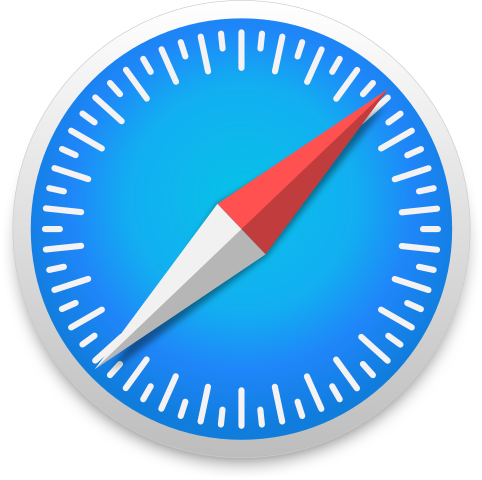Go offline with the Player FM app!
Ways to Teach... Space
Manage episode 320609452 series 2521638
Space is a challenging subject to teach, so a good subject for the first “Ways to Teach…” of this academic year.
Thomas and Robin start with a look at some physics in the news. The proton is smaller than we thought! About 5% smaller which will make it even harder to find one if you lose it, but let’s not be negative…
In other news, a new wonder-polymer promises transparency, strength and lightness all in one. Will it be as successful as graphene (which Robin made the mistake of questioning in front of an engineer).
And so to space. If there’s one message (and thanks to Dr David Boyce and others for this advice) try to use models, demos and activity to show what’s going on. It’s tempting to think you can’t do anything other than PowerPoint and YouTube for this topic, but whilst the odd video of cosmic phenomena can be great, you can make this subject live in the classroom.
So whether it’s “phases of the egg” or redshift on a balloon, try to get students involved in the subject. Living orreries, using beachballs to represent the sun and modelling the solar system’s scale with a beachball and a pea – all this and more is in our first “Ways to Teach…” of 2022.
Links to the resources we mention are listed below.
- Shrinking protons: https://journals.aps.org/prl/abstract/10.1103/PhysRevLett.128.052002
- The latest wonder-material: https://news.mit.edu/2022/polymer-lightweight-material-2d-0202
- What has graphene ever done for us? https://nanografi.com/blog/60-uses-of-graphene/
- If the moon were a pixel: https://www.joshworth.com/dev/pixelspace/pixelspace_solarsystem.html
- The solar system in your pocket: https://www.schoolsobservatory.org/discover/quick/tillroll
- (No frills) solar system scale calculator: https://physics.weber.edu/johnston/astro/solarsys_calc.htm
- 10,000 stars https://stars.chromeexperiments.com/
- Dilbert lives: https://dilbert.com/ and we love The Far Side: https://www.thefarside.com/
- Eames’ and IBM’s Powers of ten: https://www.youtube.com/watch?v=0fKBhvDjuy0
- Fire Piston: https://www.youtube.com/watch?v=Hh2vhR2Emc0
- Best Evidence Science Teaching (BEST) earth in space: https://www.stem.org.uk/best/physics/big-idea-earth-space
Join in!
Please share ideas or successes – or indeed questions by messaging us on BlueSky: https://bsky.app/profile/physicstp.bsky.social . You can also message us via our website contact form on every page of the web site at the.physicsteachingpodcast.com, or email using the address given in the podcast (if we remember). We are moving away from X but can be found there as @physicstp.
Music
- Season 7: Physics Is Our Business by Miracles of Modern Science.
- Seasons 5 and 6: Crescents by Ketsa.
- Seasons 3 and 4: Disco Sheik by Podington Bear.
- Seasons 1 and 2: One legged equilibrist polka by Circus Homunculus.
- Occasionally we also use Cantina Rag by Jackson F. Smith.
The music is used under the Attribution-NonCommercial 3.0 International License
Please enable JavaScript to use the contact form.
144 episodes
Manage episode 320609452 series 2521638
Space is a challenging subject to teach, so a good subject for the first “Ways to Teach…” of this academic year.
Thomas and Robin start with a look at some physics in the news. The proton is smaller than we thought! About 5% smaller which will make it even harder to find one if you lose it, but let’s not be negative…
In other news, a new wonder-polymer promises transparency, strength and lightness all in one. Will it be as successful as graphene (which Robin made the mistake of questioning in front of an engineer).
And so to space. If there’s one message (and thanks to Dr David Boyce and others for this advice) try to use models, demos and activity to show what’s going on. It’s tempting to think you can’t do anything other than PowerPoint and YouTube for this topic, but whilst the odd video of cosmic phenomena can be great, you can make this subject live in the classroom.
So whether it’s “phases of the egg” or redshift on a balloon, try to get students involved in the subject. Living orreries, using beachballs to represent the sun and modelling the solar system’s scale with a beachball and a pea – all this and more is in our first “Ways to Teach…” of 2022.
Links to the resources we mention are listed below.
- Shrinking protons: https://journals.aps.org/prl/abstract/10.1103/PhysRevLett.128.052002
- The latest wonder-material: https://news.mit.edu/2022/polymer-lightweight-material-2d-0202
- What has graphene ever done for us? https://nanografi.com/blog/60-uses-of-graphene/
- If the moon were a pixel: https://www.joshworth.com/dev/pixelspace/pixelspace_solarsystem.html
- The solar system in your pocket: https://www.schoolsobservatory.org/discover/quick/tillroll
- (No frills) solar system scale calculator: https://physics.weber.edu/johnston/astro/solarsys_calc.htm
- 10,000 stars https://stars.chromeexperiments.com/
- Dilbert lives: https://dilbert.com/ and we love The Far Side: https://www.thefarside.com/
- Eames’ and IBM’s Powers of ten: https://www.youtube.com/watch?v=0fKBhvDjuy0
- Fire Piston: https://www.youtube.com/watch?v=Hh2vhR2Emc0
- Best Evidence Science Teaching (BEST) earth in space: https://www.stem.org.uk/best/physics/big-idea-earth-space
Join in!
Please share ideas or successes – or indeed questions by messaging us on BlueSky: https://bsky.app/profile/physicstp.bsky.social . You can also message us via our website contact form on every page of the web site at the.physicsteachingpodcast.com, or email using the address given in the podcast (if we remember). We are moving away from X but can be found there as @physicstp.
Music
- Season 7: Physics Is Our Business by Miracles of Modern Science.
- Seasons 5 and 6: Crescents by Ketsa.
- Seasons 3 and 4: Disco Sheik by Podington Bear.
- Seasons 1 and 2: One legged equilibrist polka by Circus Homunculus.
- Occasionally we also use Cantina Rag by Jackson F. Smith.
The music is used under the Attribution-NonCommercial 3.0 International License
Please enable JavaScript to use the contact form.
144 episodes
All episodes
×Welcome to Player FM!
Player FM is scanning the web for high-quality podcasts for you to enjoy right now. It's the best podcast app and works on Android, iPhone, and the web. Signup to sync subscriptions across devices.




